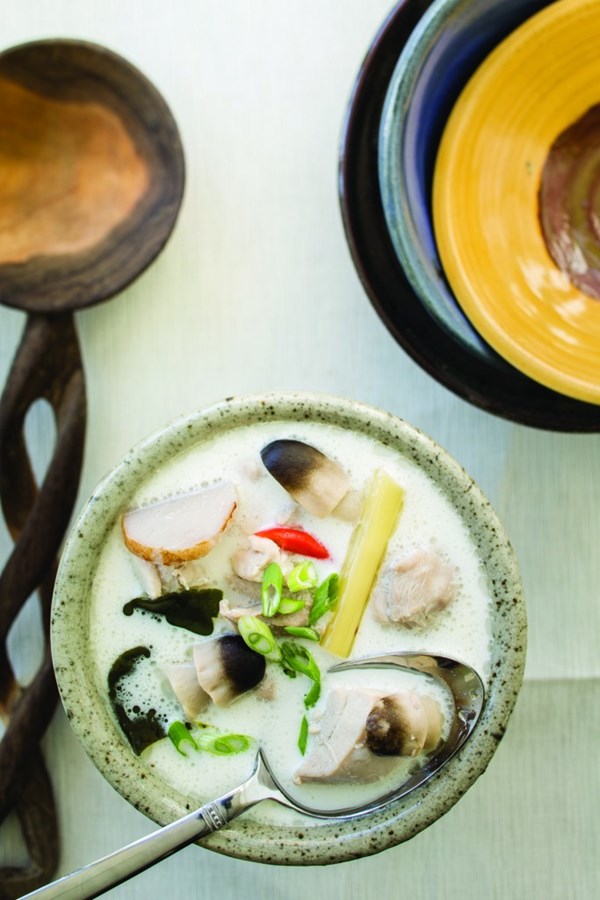Spice support: galangal
November 5, 2017 by Darcie
Some spices so much resemble another spice that the more common of the two is usually substituted for the lesser known one. Such is the case for galangal, a tropical plant in the ginger family. There are two main types of galangal used in Southeast Asian, and to a lesser extent, Chinese cooking: greater galangal and lesser galangal. There is a third type, kaempferia galangal, but it is not as popular as the other two varieties.
The rhizomes of both greater and lesser galangal look similar to ginger root, but the skin has horizontal stripes or rings, and the color is different as well. Greater galangal usually has orange to reddish skin with a yellow interior, while lesser galangals skin is orange-red to brown, with pale brown flesh that sometimes has a pink tinge to it.
Greater galangal’s aroma is reminiscent of ginger, but it is more peppery and has a distinctly piney fragrance. Lesser galangal is hotter and more pungent than greater galangal. You can find fresh roots in many Asian markets, but the spices are often available in powder form as well. Galangal is much tougher than ginger so it can’t be peeled and grated; when used fresh it is usually sliced.
Galangal is a foundational flavor in Thai, Indonesian, Malaysian, and other Southeast Asian cuisines. You’ll find it in many Thai curry pastes and in several versions of sambal seasoning paste. Galangal is a frequent ingredient in fish and seafood dishes. While it was well known in European kitchens as early as the 14th century, over the centuries galangal has fallen out of favor there.
Photo of Coconut galangal chicken soup (Tom ka gai) from Hot Thai Kitchen by Pailin Chongchitnant
Categories
- All Posts (7081)
- Antipasto (2210)
- Author Articles (250)
- Book News (944)
- Cookbook Giveaways (996)
- Cookbook Lovers (262)
- Cooking Tips (116)
- Culinary News (300)
- Food Biz People (558)
- Food Online (800)
- Holidays & Celebrations (277)
- New Cookbooks (154)
- Recipes (1520)
- Shelf Life With Susie (231)
- What's New on EYB (134)
Archives
Latest Comments
- Ganga108 on Getting to the heart of it
- emi10383 on French at Heart – Cookbook Giveaway
- emi10383 on 20 Amici – 40 Ricette Cookbook Giveaway
- emi10383 on For the Love of Lemons by Letitia Clark – Giveaway
- emi10383 on Balli Balli – Cookbook Giveaway and Quick Bites
- Binguy on 20 Amici – 40 Ricette Cookbook Giveaway
- Binguy on 20 Amici – 40 Ricette Cookbook Giveaway
- Binguy on French at Heart – Cookbook Giveaway
- lexa25 on For the Love of Lemons by Letitia Clark – Giveaway
- lexa25 on Balli Balli – Cookbook Giveaway and Quick Bites